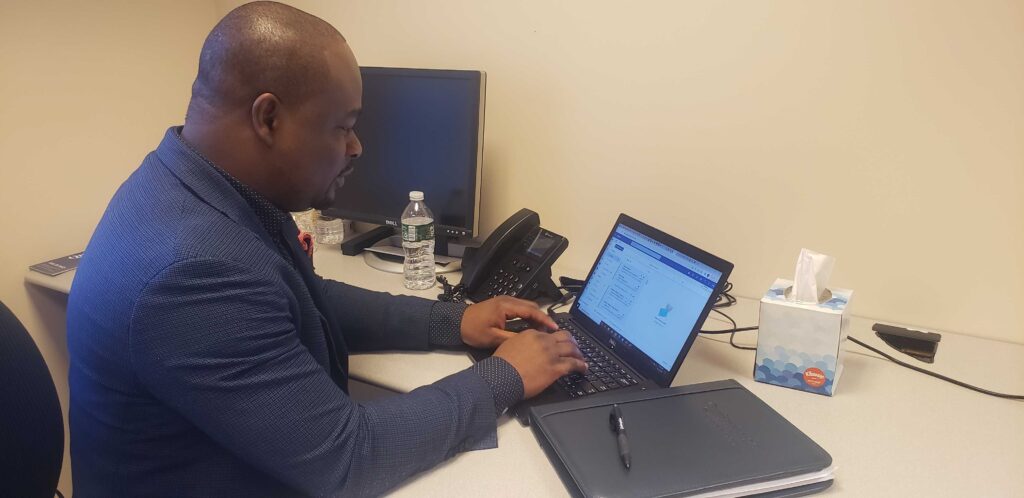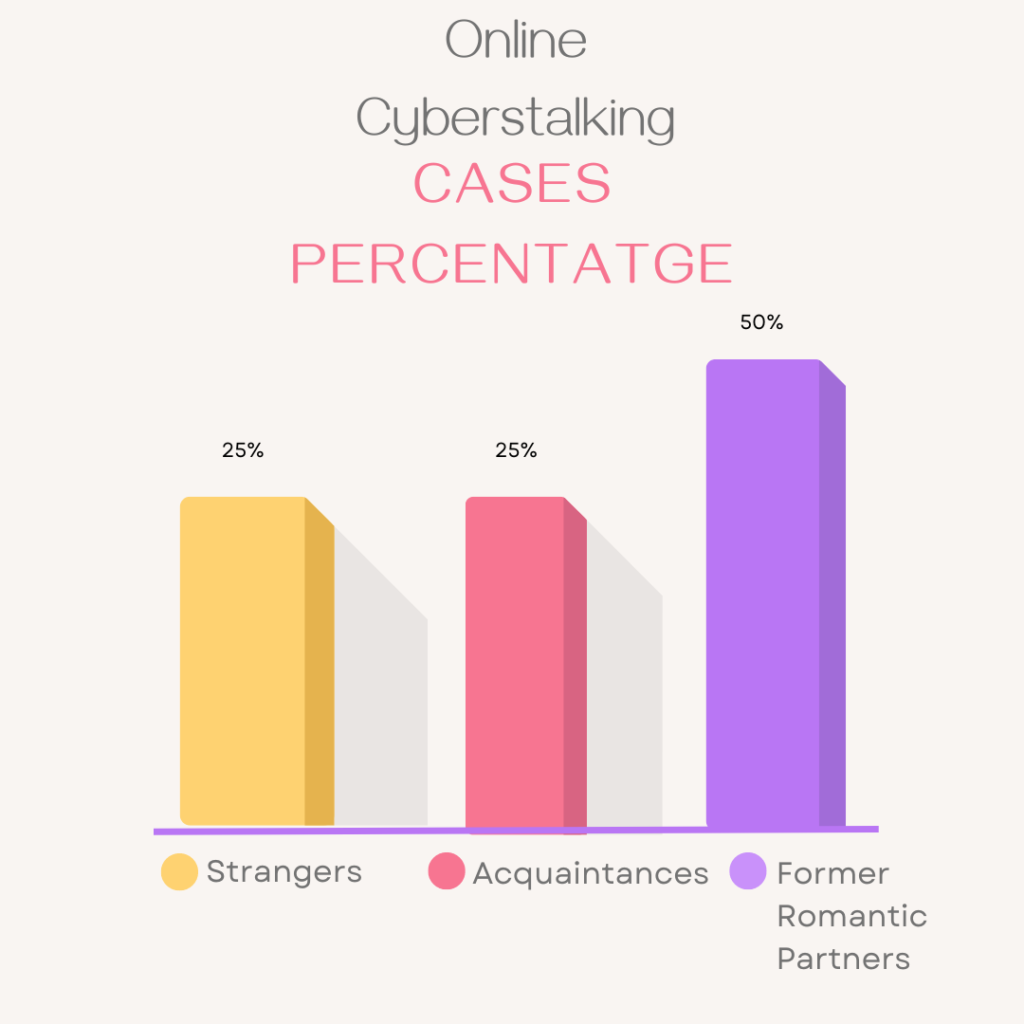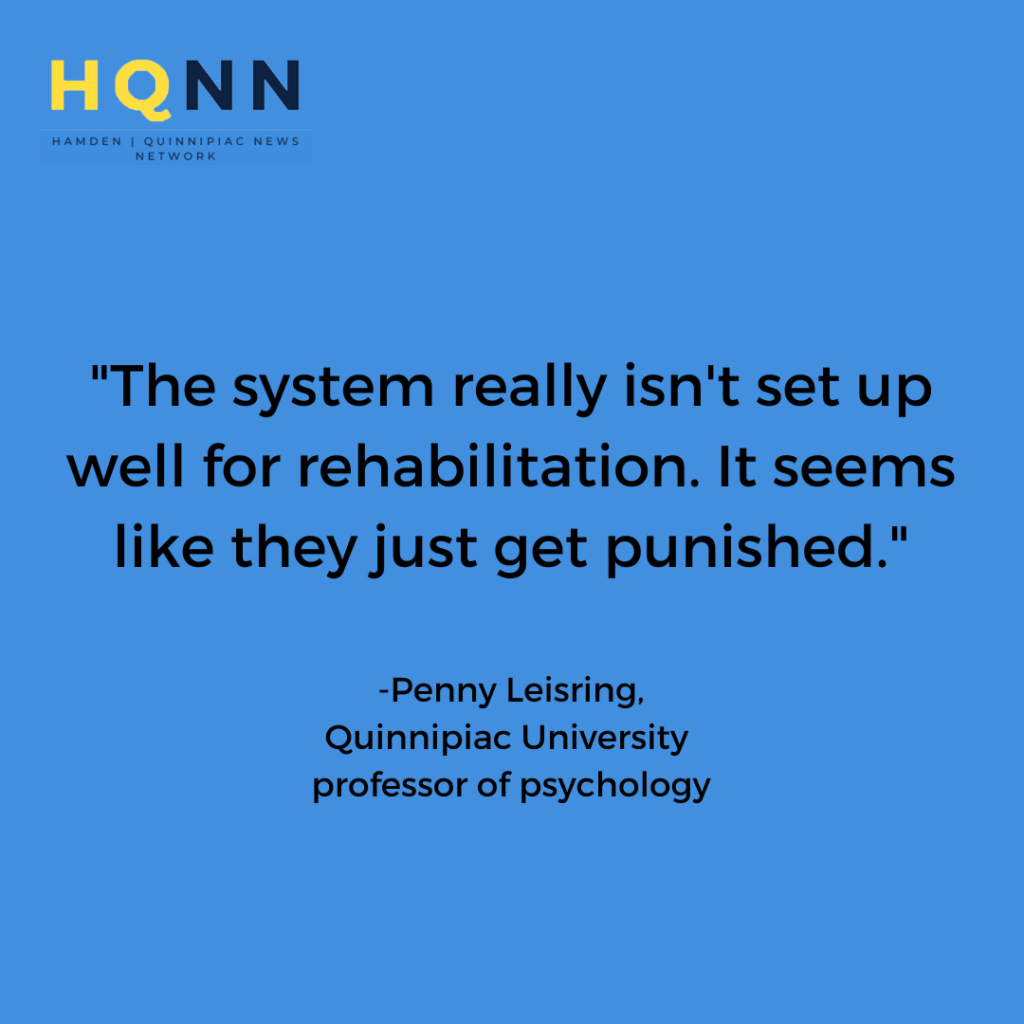
A student leaving home to attend college wants to know that they will live in a safe environment to learn, make friends and create memorable experiences. Parents likewise want that for their children. However, as one Quinnipiac alumni know, the crime of cyberstalking presents an ongoing, silent threat against victims.
Geoff Hill, who graduated in May 2022, told HQNN about the time he was a victim of this very act.
“I was reached out to by a former (acquaintance) that I used to talk to,” Hill said. “She sent me a picture of ‘Cory in North Carolina,’ and it was all my photos.”
Photos of Hill that he had posted to Instagram were plastered all over an anonymous Tinder account.
What’s more, Hill’s girlfriend sent him another screenshot a couple of weeks later under a second account of “Charlie,” which contained even more photos of Hill, compromising his identity.
“I would just think about how someone else is talking to other people, for me,” Hill said. “I’m in a period of not thinking it could ever be real again. That’s just so weird.”
Hill is just one story from an increasing number of anonymous cyberstalking victims among Quinnipiac University students.
Cyberstalking activity increased over a three-year period at Quinnipiac leading up to the pandemic, according to the school’s Campus Safety and Security report, known as the Clery report, which is filed with the federal Department of Education. The trend has continued since students returned to campus full-time.
Quinnipiac’s Title IX Coordinator Dennis Kwarteng said he has received up to four reports of confirmed cases so far this fall. That is in line with the 2019 numbers when five cases were reported, and 2020, when the number increased to six.
In addition, Quinnipiac’s Clery compliance officer and investigator Joe Dease Jr. reported six additional stalking incidents in 2021, per the Violence Against Women Act offense.
Kwarteng said his office defines cyberstalking as targeted online harassment against a student that causes distress.
“Any conduct directed at a specific person, that would cause any reasonable person to feel some sort of emotional distress because they are in fear or they are scared for their life,” Kwarteng said. “Or they just feel overwhelmed by the amount of attention they are getting from this person.”
Cyberstalkers may commit their crime from campus or off-campus locations. At the university, Kwarteng said stalkers tend to come from off-campus and do not use the Quinnipiac network or email.
He said some use catfishing techniques to find students on social media apps such as Instagram, Snapchat, and Facebook, or messaging apps such as Whatsapp to identify targets. Catfishing – which is what happened to Hill – is using images and information of someone else in order to form a new online identity, according to cybersmile. Once the new identity – or several new identities potentially – are made, the perpetrator can use the information to do damage to someone’s reputation or create dishonest relationships online.
“They will send naked photos and will request for you to do the same,” Kwarteng said. “Or they will ask you to send money over because they need your help with something.”
This fall, the demographics of victims and stalkers seem to be mixed.
Kwarteng suggested that in the reported cases, victims tended to be first-year students. The office fields more reports of male victims rather than females. Meanwhile, identified stalkers are split between men and women.
Cyberstalking can be particularly damaging because it affects both the victim and the person whose identity has been taken to hide the anonymous user.
Quinnipiac psychology professor Penny Leisring said reactions, such as Hill’s, are not uncommon.
Leisring, author of a study titled “Stalking Made Easy,” suggested that cyberstalking incidents can lead to deep psychological trauma.

Leisring wrote that many of the victims of online stalking come from prior relationships, making anonymous online cases somewhat of a new trend. Leisring added that approximately half of the stalkers were involved in romantic relationships with the victim, while a quarter of the crimes are committed by complete strangers and another 25% by acquaintances.
Effects of this kind of crime can range from mild to severe depending on the victim, Leisring said.
In Hill’s case, while he said he was unnerved by the events at the time of them happening, he ultimately didn’t pursue a criminal case.
Some of the more extreme symptoms in victims of cyberstalking include depression, alcoholism, drug use, and Post Traumatic Stress disorder.
There also seems to be a parallel with those who perpetrate stalking, in that they tend to display forms of psychological damage.
In Leisring’s study, she reveals that stalkers and domestic violence partners tend to share similar traits, writing, “Some traits stalkers tend to display stem from childhood abuse and disrupted attachment, which is a behavioral propensity to seek contact and proximity to an attachment figure for various negative mental reasons such as perceived danger.”
Even though therapy and rehabilitation programs help victims, stalkers get little or no help at all in seeking help to change their behavior.

Connecticut state law defines multiple classes of stalking. The lowest offenses are misdemeanor cases, which are stalking in either the second or third degree.
The most severe case is stalking in the first degree, which is a felony. Stalking becomes first-degree when the perpetrator repeatedly targets a victim to cause them to fear for their life or for those around them. On top of this, other factors play in like whether the victim was a minor or if the acts of following were part of a hate crime.
All of these offenses carry potential penalties of up to five years in prison and fines of up to $5,000.
Quinnipiac professor of law Elizabeth Tanaka said that cyberstalking is difficult to prosecute.
“Part of the problem with the stalking laws is that they’re very excessively focused on emotional distress and physical violence.”
It is hard to get a protective order against a stalker, Tanaka said, if the victim didn’t have a prior relationship with the perpetrator.
Due to the limited legal means for cyberstalking protection, it’s important to understand the steps internet users can take to lower their chances of being a victim. Leisring’s study gives tips on how to do just that. One thing that can be done is to do a quick Google search to see what information about oneself is available. If there is any vulnerable information, contact the site’s webmaster to remove it.
Leisring also suggests being careful about what information is posted online, and keeping information such as contact info and relationship status off a profile page. Social media sites like Facebook and Instagram also allow users to regulate who follows them and who can see their social posts.
In addition, Leisring suggests that if a person feels like they’re actively being stalked, they should tell the stalker to stop and then maintain distance. If the stalker continues to contact, victims should get a third party such as an attorney, to reach out to the stalker and tell them that if the behavior persists the police will be contacted.
In Hill’s case, while he didn’t look into pressing charges he made sure to be safer online going forward. He made his Instagram account private for about “a year and a half to two years” after the incident to prevent random users from viewing his pictures. However, his account currently appears public today.
